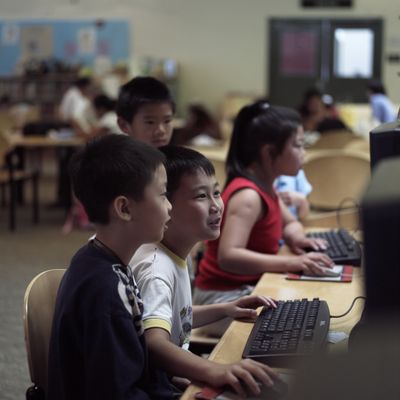Threat on the Net
As online bullying becomes more common, statistics indicate unsuspecting minors can be their own worst enemies

According to a recent report, the roughly 6 out of 10 adolescents who socialize on the Internet have relatively little to fear from faceless perverts lurking in the anonymity of cyberspace.
But reassured parents might want to read to the report’s end: The perpetrators of psychological wounds and the stalkers who would steal their kids’ innocence are more likely the spiteful, sulking or silly friends the kids hang out with.
And their own offspring might play a significant role in the misbehavior, too.
Bullying and harassment, most often by peers, “are the most frequent threats that minors face,” according to the report by a Harvard-led task force on Internet safety, ordered by the nation’s attorneys general.
Although kids concede that minors routinely proposition other minors for sex on social networking sites such as MySpace, such incidents “are understudied, underreported to law enforcement, and are not part of most conversations about online safety,” the report adds.
“It’s an important message for parents,” says Katherine C. Cowan, communications director for the National Association of School Psychologists – and, with four kids ages 17 to 24, a “grizzled veteran” of parenting teens.
“Sure, there are crazy sexual predators out there,” says Cowan. “But the most common problem is kids being mean to each other, and 13-year-old girls posting naked pictures of themselves.”
The message that kids might be their own worst enemies on the Internet resonates with Anthony E. Wolf, a practicing clinical psychologist in Massachusetts and author of “Get Out of My Life, But First Could You Drive Cheryl and Me to the Mall?”
“What are the big problems in cyberspace?” he asks. “One definitely is the stuff that kids do to and with each other.
“Yes, there’s cyberbullying, but a pretty surprisingly high percentage of kids on the Internet are talking about drugs, sex and drinking in ways that are semi-innocent and not so innocent at all.”
A survey conducted by the Center for the Digital Future at the University of Southern California’s Annenberg School found that in 2006, 63 percent of parents surveyed believed there were “quite a few” sexual predators on MySpace.
But the new attorneys general task force report, “Enhancing Child Safety & Online Technologies,” found that most reports of online sexual predation predate the rise of social networking sites such as MySpace, Facebook and Friendster.
And it says that most sexual fishing expeditions take place outside these networking sites, in chat rooms and online forums intended for adults.
Moreover, the task force report suggested that parents’ worries may be largely misplaced: In most of the off-line encounters that began on the Internet, it found, “the minor knows the adult is older (usually in his or her twenties), knows that sex is desired and believes that she or he can consent to a sexual encounter.”
And although parents appear to believe that most sexual advances are made by older adults, the task force found that almost half of sexual solicitations to kids over the Internet are made by other minors, and most of the rest come from young adults 18 to 25 years old.
Such facts confront many parents with a litany of uncomfortable but age-old conflicts: The kids who are trolling for sex may be our own; the peers with whom these kids are exploring their emerging sexuality have edged out parents as an influence; and these young people are taking risks that parents cannot easily control.
In short, Wolf says, the kids are growing up. Only now their teenage angst is being played out in a medium that “does make certain kinds of naughtiness” – including the posting of suggestive photos – “more possible.”
It’s a medium, as well, in which parents feel outrun, outmaneuvered and just plain shut out by the digital pioneers they spawned.
“Kids have left their parents way in the dust in terms of computer savvy and knowledge,” says psychologist Richard A. Lieberman, who coordinates the Los Angeles Unified School District’s Suicide Prevention Unit.
“I see parents further behind than ever before,” Lieberman says, overwhelmed by the effort to monitor their kids’ electronic and real-life socializing and keep up with their own obligations.
In a 2007 survey by the Kaiser Family Foundation’s Media and Health project, parents expressed growing confidence that they were cracking into their children’s electronic world. Nearly 3 in 4 surveyed said they knew “a lot” about what their kids were doing online.
And among parents of kids who socialized electronically, 82 percent said they reviewed their children’s social networking profiles, 87 percent said they checked their children’s instant-messaging “buddy lists” and 76 percent said they went online to check what Web sites their kids had visited.
Lieberman says that these parents probably are kidding themselves – or that many may be so busy reading over their kids’ shoulders that they fail to get a good reading of the kids themselves.
“I’ve had a parent say, ‘What do you mean my daughter’s depressed and isolated? She has 900 friends on MySpace!’ ” he says.